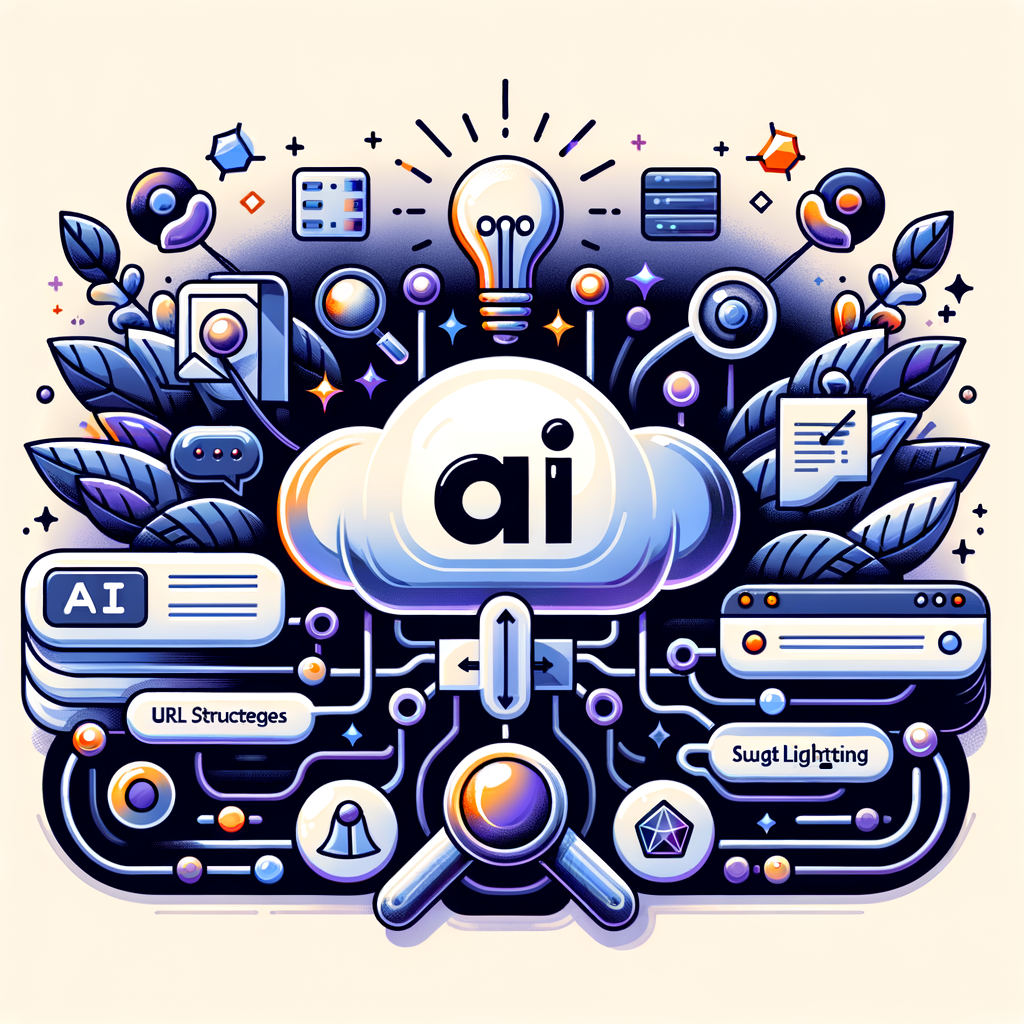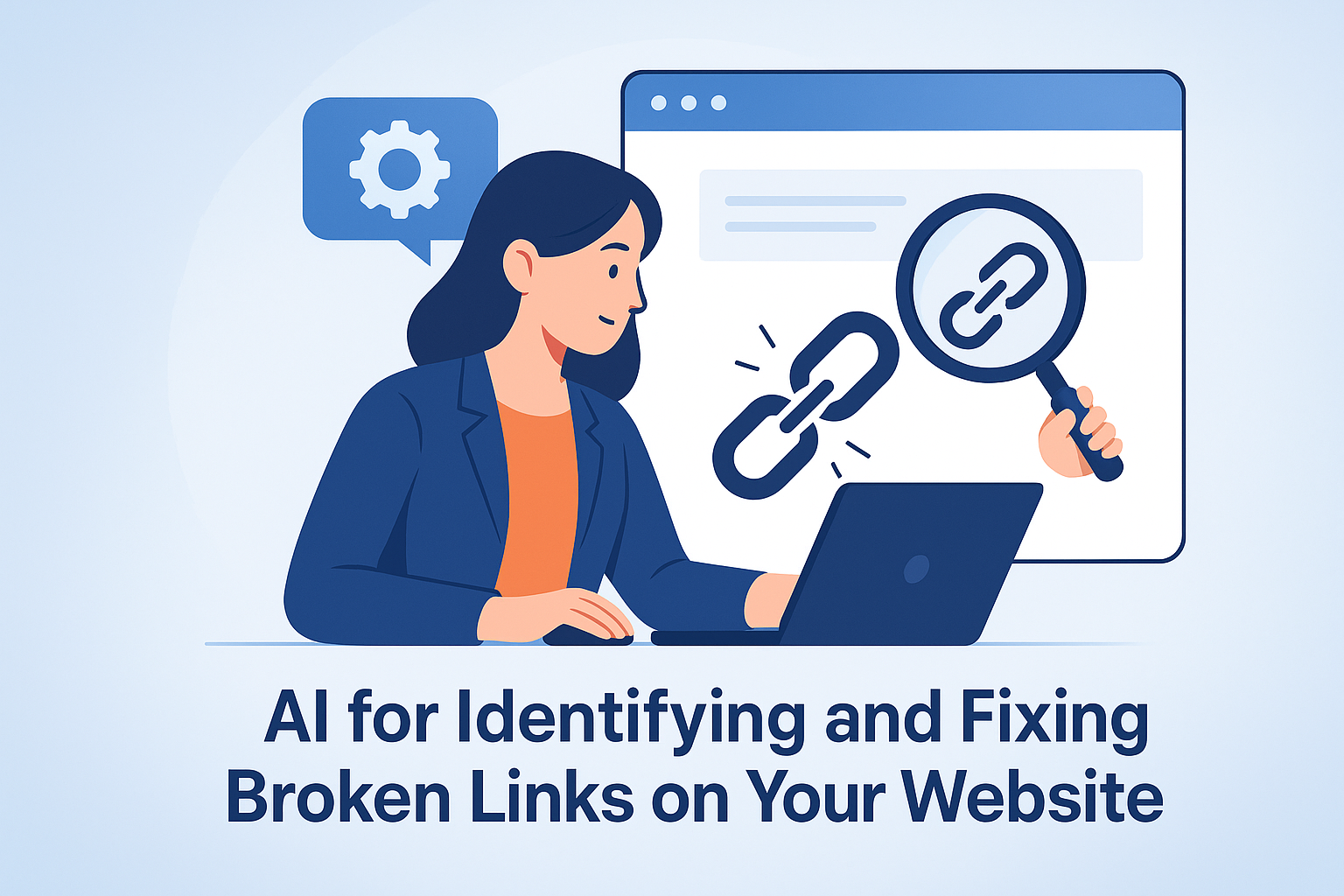You’ve written great content. Your site loads fast. You’ve even added schema markup.
But what about your URLs?
A messy, unclear, or keyword-stuffed URL structure can hold your content back from ranking, confuse search engines, and create a poor user experience.
The good news? Artificial Intelligence can now help you build and refine SEO-friendly URL structures and slugs—even across hundreds or thousands of pages.
In this guide, you’ll learn how to:
- Understand what makes a good SEO URL and slug
- Use AI to identify and fix poor URLs
- Create optimized slugs for existing and new content
- Maintain consistency across categories and page types
- Leverage DIYSEO GPT and SEO AI Writer to automate the process
- Use Link Marketplace to redirect authority when URLs are changed
Why URL Structure and Slugs Matter for SEO
An optimized URL does more than look clean. It directly influences:
✅ Search Engine Indexing
Search engines use URLs to understand context and relevance. Clean slugs make it easier for bots to categorize your content accurately.
✅ Keyword Relevance
Including primary keywords in your slug can give Google and users a clear idea of what the page is about.
✅ Click-Through Rate (CTR)
Short, readable URLs appear more trustworthy and clickable in search results.
✅ Crawl Efficiency
Logical URL hierarchies help search engines discover and understand related pages more efficiently.
What Makes a Good SEO-Friendly URL and Slug?
Before we automate, let’s define what we’re aiming for. A good URL slug is:
- Short and descriptive
- Keyword-rich (but not stuffed)
- Lowercase and hyphenated (not underscored)
- Free of stop words and filler text
- Static (no unnecessary parameters)
- Aligned with the page title or main focus
❌ Bad Example:
bashCopyEditwww.example.com/blog/article?id=4839
✅ Good Example:
bashCopyEditwww.example.com/blog/how-to-optimize-seo-urls
How AI Improves URL Structure at Scale
Traditionally, reviewing and optimizing URLs required:
- Manual audits
- Regex rules
- Spreadsheet-driven rewrites
- Risk of broken links
AI simplifies the process by:
- Auditing entire site structures for slug issues
- Recommending SEO-friendly replacements
- Ensuring consistency across categories
- Flagging duplicate or overly long URLs
- Generating slugs for new content automatically
Let’s walk through how to do it using DIYSEO GPT and SEO AI Writer.
Step-by-Step: Optimizing URL Structure and Slugs with AI
🔍 Step 1: Audit Your Existing URLs
Start by exporting a full list of your website’s URLs. This can be done via your CMS, Google Search Console, or SEO crawlers.
Then, ask DIYSEO GPT:
“Analyze this list of URLs for SEO issues. Highlight slugs that are too long, include parameters, lack keywords, or are inconsistent.”
The AI will:
- Flag slugs with excessive word count
- Identify keywordless slugs
- Highlight URLs with duplicate or irrelevant tokens
- Suggest categories or folders that need cleaning
🧠 Step 2: Generate Optimized URL Slugs
For flagged pages, you can now use AI to generate clean, SEO-focused slugs.
Prompt SEO AI Writer:
“Generate an SEO-friendly URL slug for this page title: ‘10 Proven Strategies to Improve Ecommerce Conversion Rates’”
Output examples:
/ecommerce-conversion-strategies/boost-ecommerce-sales/improve-conversion-rate
You can also prompt it in bulk:
“Create slugs for these 20 blog post titles.”
Just paste your titles in a list and get back formatted, keyword-rich slugs ready for implementation.
🔄 Step 3: Reorganize Categories and Hierarchies
If your site has inconsistent folder structures (e.g., /blog/, /posts/, /articles/), AI can recommend a unified structure.
Prompt DIYSEO GPT:
“Review my blog categories and suggest a simplified folder structure for SEO.”
You’ll receive suggestions like:
- Standardize all articles under
/blog/ - Move product guides under
/guides/ - Consolidate outdated
/resources/and/docs/under/learn/
This makes your URL hierarchy logical for both users and bots.
✍️ Step 4: Write Redirect Rules (If Needed)
If you’re changing live URLs, 301 redirects are essential to preserve rankings and backlinks.
Prompt:
“Generate 301 redirect rules from old slugs to new slugs.”
Input example:
- From:
/post?id=2394 - To:
/best-seo-plugins-wordpress
Output (Apache):
apacheCopyEditRedirect 301 /post?id=2394 /best-seo-plugins-wordpress
You can bulk-generate rules for your CMS or server configuration.
🔗 Step 5: Rebuild Authority with Link Marketplace
Changed URLs mean your pages may temporarily lose ranking momentum. Use the Link Marketplace to point fresh, high-authority backlinks to your new optimized URLs and accelerate recovery.
Prompt:
“Suggest link categories for building authority to my updated guide on on-page SEO.”
Real-World Use Cases for AI-Powered Slug Optimization
🛍️ Ecommerce Product Pages
Problem: Auto-generated slugs like /product/12345?color=blue
AI Fix:
- Suggest
/mens-running-shoes-blue - Remove parameters
- Add keywords from title and description
🧠 Knowledge Base or FAQ
Problem: Inconsistent formatting like /help/What-Is-a-Canonical-Tag vs. /support/canonical-tags
AI Fix:
- Normalize under
/help/ - Format all slugs lowercase-hyphen style
- Suggest updated canonical hierarchy
✍️ Blog Content
Problem: Keyword-stuffed or generic slugs like /seo-1, /blog-article-7
AI Fix:
- Generate specific slugs based on H1 or title
- Include long-tail terms (e.g.,
/seo-link-building-basics) - Shorten unnecessarily long URLs
URL Optimization Checklist (AI-Enhanced)
Use this checklist to review or build your slugs the AI-assisted way:
| Criteria | Goal |
|---|---|
| ✅ Keyword included? | One primary keyword per slug |
| ✅ Short and readable? | 3–6 words max |
| ✅ Lowercase only? | Consistency and crawl clarity |
| ✅ No parameters or session IDs? | Clean, indexable URLs |
| ✅ Matches page intent? | Reflects content topic |
| ✅ Matches category logic? | Fits the overall structure |
DIYSEO GPT can audit and enforce these rules at scale across your sitemap.
Bonus: Using AI to Generate Slugs While Creating Content
The SEO AI Writer is especially powerful when you’re creating new content and want an optimized slug from day one.
Example prompt:
“I’m writing a post titled ‘How to Build a Content Calendar.’ Suggest 3 slug options that are short, descriptive, and keyword-optimized.”
You’ll receive:
/content-calendar-guide/how-to-build-content-calendar/plan-blog-content
Choose the best based on search intent and character count. Then use that slug across your internal links, metadata, and sitemap.
Final Thoughts
URL structure and slugs aren’t just technical details—they’re core components of a well-optimized website. Clean, keyword-rich, and consistent URLs help search engines understand your site better and make users more likely to click.
With AI, you can now:
- Audit URL structures in seconds
- Generate optimized slugs automatically
- Apply SEO consistency across categories and templates
- Handle redirects and structure changes with confidence
- Reinforce new pages with authority via the Link Marketplace
With DIYSEO GPT and SEO AI Writer, you have everything you need to clean up your URLs—and your rankings.
Frequently Asked Questions
1. What is the significance of URL structure and slugs in SEO?
URL structure and slugs play a pivotal role in search engine optimization (SEO). A well-structured URL provides both search engines and users clear and concise information about the content of the page. This information helps in anticipating the content before actually accessing the page, enhancing the overall user experience. For search engines, a good URL structure facilitates better crawling and indexing, which can contribute to improved search rankings. Moreover, a meaningful slug – the part of the URL identifying a particular page – can boost relevance and click-through rates because users can relate better with URLs that are direct and descriptive rather than ambiguous strings of numbers and characters. Utilizing AI approaches, businesses can dynamically optimize these elements to ensure every URL is action-focused and keyword-rich, leading to optimal SEO outcomes.
2. How does AI benefit the optimization of URL slugs?
AI offers substantial benefits when optimizing URL slugs by analyzing vast amounts of data to determine which keywords are trending and relevant. AI algorithms can help determine the most effective keywords to include in a slug for maximizing visibility and ensuring it aligns perfectly with the user’s search intent. As AI continues to learn from user interactions, it can refine these suggestions to enhance the contextual relevance of every slug. Furthermore, AI-powered tools can automate the generation of slugs to ensure consistency and adherence to SEO best practices, thus freeing up valuable time for marketers to focus on broader strategy tasks. Ultimately, AI-backed solutions provide data-driven insights into how a slug can be formatted to be both appealing to users and optimized for search engine algorithms, eliminating the guesswork and elevating URL structuring to a more sophisticated level.
3. What are some AI-powered strategies for improving URL structure?
AI can implement several strategies to improve URL structure. One approach is the automatic generation and optimization of URLs using natural language processing (NLP) to ensure URLs mirror the expected search terms users might use. AI algorithms can analyze historical web traffic data and user behavior to forecast which URL formats perform best in terms of engagement and search ranking. Additionally, by employing machine learning processes, AI can continually enhance URL structures to adapt to evolving search trends and user behavior. Another AI strategy involves using predictive analytics to design URLs that lead to higher on-page retention and conversion rates by aligning the structure with the user’s journey. By leveraging these advanced techniques, AI maximizes the efficiency and effectiveness of URL structures to achieve the best SEO performance.
4. How can AI contribute to URL optimization for mobile SEO?
AI is exceptionally beneficial in optimizing URLs for the mobile ecosystem. Mobile users often seek fast and instantaneously accessible content, so speed and relevance are crucial factors. AI can customize URLs by assessing mobile-specific search behaviors and adjusting the URL structures to serve mobile-first indexing effectively. It can also use its data-driven capabilities to configure shortened, clean, and easily digestible URLs that display well on mobile screens. Mobile SEO often requires quick adjustments based on the rapid changes in user trends – a challenge AI can meet through its predictive capabilities and real-time algorithms. AI’s continuous learning process ensures that URL structures remain progressive, clear, and optimized for seamless user experiences across all mobile devices.
5. Are there any potential drawbacks of using AI for URL optimization?
While AI can significantly enhance URL optimization, there are some potential drawbacks. One challenge involves the initial setup and integration of AI systems, which might require significant investment and a learning curve for the team to fully understand and leverage the AI’s capabilities. There’s also a risk of becoming overly reliant on AI solutions, which may lead to a lack of human oversight in creative and strategic decision-making. It’s crucial to balance AI’s analytical strengths with human intuition and industry-specific knowledge. Lastly, without constant monitoring and evaluation, AI might inadvertently prioritize certain SEO strategies that could be counterproductive to a specific brand’s objectives. Therefore, a thoughtful, integrated approach combining AI technology with human expertise is essential to mitigate these potential downsides and harness AI’s full potential in enhancing URL structures and slugs.



